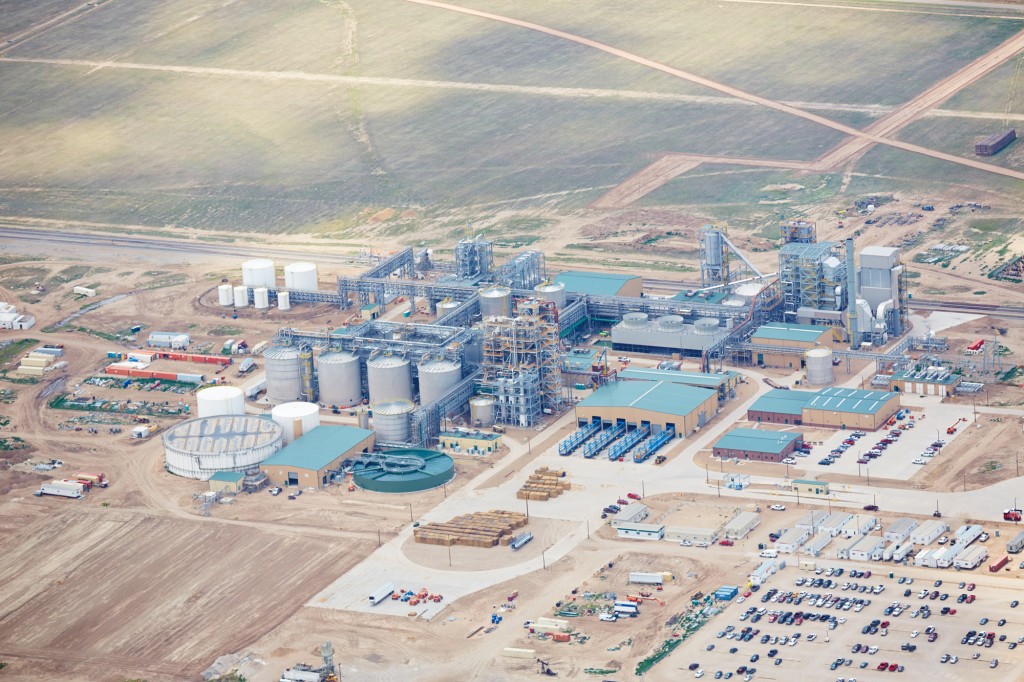The Renewable Fuel Standard was designed to introduce increasing volumes of biofuels into the US liquid transportation fuel system as part of the 2005 Energy Policy Act. The standard has been expanded over time with greater focus given to advanced biofuels like cellulosic ethanol that do not use food crops as a direct feedstock.
Blending corn-based ethanol into the country’s fuel supply has become a controversial issue because some life-cycle analysis studies suggest the energy intensity and greenhouse gas footprint associated with growing corn and processing it into fuel outweigh the reduced greenhouse gas emissions â€" compared with petroleum-based fuels â€" generated from burning ethanol in engines. Additionally, many including the EPA believe the US fuel system has reached the “blendwall†above which higher concentrations of ethanol can damage pipelines and vehicle engines.
While that debate rages on, however, so-called second generation biofuels are slowly beginning to flow into the US fuel supply. Advanced biofuels that use non-food feedstock like agricultural waste have long been seen as a solution to the food vs fuel conundrum, but these advanced fuels have also been slow to materialize in commercial volumes, despite being granted their own RFS category.
One major RFS criticism is the system mandates specific volumes that refiners must blend into their fuels, but the technology required to produce those mandated volumes has not materialized fast enough. When the RFS mandate was originally formulated, it set an ambitious cellulosic biofuel target with the rationale that companies would rise to the occasion and produce the mandated volumes required by law. The situation has humorously been summed up as such: “It’s like trying to solve a traffic problem by mandating hovercraft. Except we don’t have hovercraft.†In fact, EPA decreased RFS targets for both advanced biofuels and total renewable fuel in its proposed 2014 blending requirements released last November, which have yet to be finalized.
While the battle over the RFS continues, the cellulosic ethanol industry took a major step forward today with the inauguration of a commercial-scale plant in Hugoton, Kansas. The biorefinery has the capacity to produce 25 million gallons of cellulosic ethanol per year, which alone exceeds EPA’s proposed 17 mm gallon blending target under RFS. The plant also generates 25 MW of electricity, which supplies its own needs and provides excess power to the local community.
“The Hugoton plant opening is the result of 10 years of technical development, roughly 40,000 hours of pilot and demonstration plant operation, and the support of the DOE,†said Manuel Sánchez Ortega, CEO of Abengoa, the plant’s developer. “…This would have been simply impossible without the establishment of the Renewable Fuel Standard.â€
The RFS will remain controversial, but this new plant is a big win for the cellulosic ethanol portion of the equation.

Authored by:
Jared Anderson
Jared Anderson, Managing Editor at Breaking Energy, covered international oil and natural gas market fundamentals as an Analyst then Senior Analyst in the Research & Advisory division at Energy Intelligence Group. Earlier in his career, Jared spent several years working in the environmental consulting industry. He holds a Master's degree in international relations with a focus on energy from ...


No comments:
Post a Comment